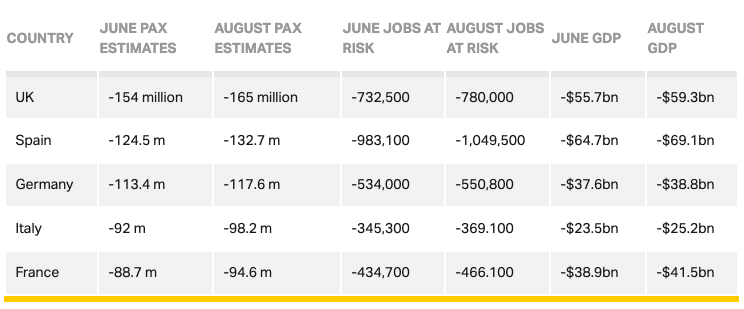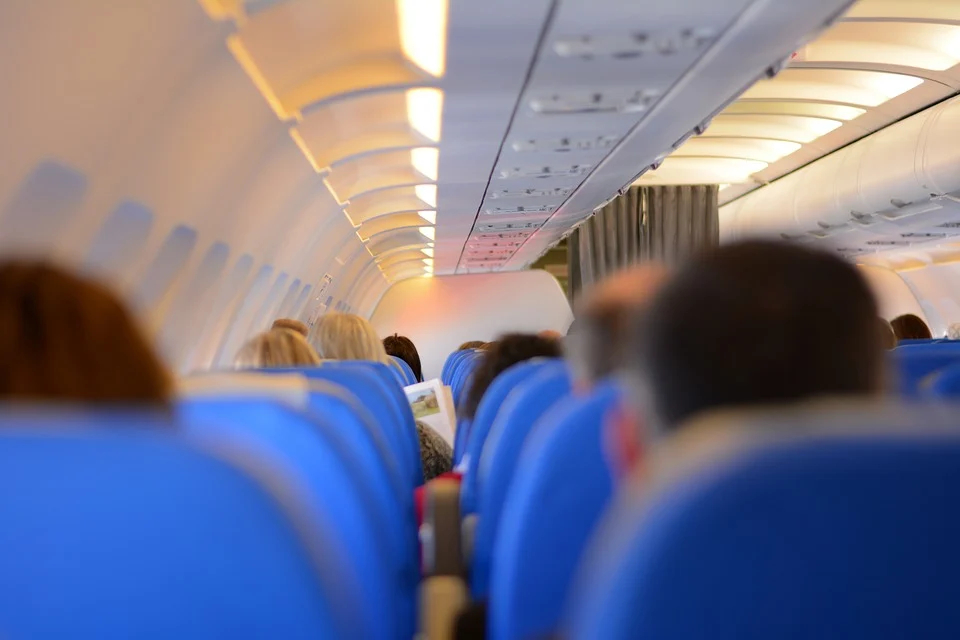The International Air Transport Association (IATA) released an update to the impacts of the COVID-19 pandemic on air passenger numbers, employment and economies across Europe, and urged governments to coordinate to lift border restrictions and find alternatives to quarantine measures to avoid further economic damage.
Although the European market has seen an increase in the number of flights in recent months, supported by the reopening of borders between countries of the Schengen area and the non-Schengen EU states, flights are still more than 50% below the same period in 2019. Passenger numbers are currently forecast to fall by around 60% in 2020, which represents about 705 million passenger journeys. The near-term outlook for recovery in Europe remains highly uncertain with respect to the second wave of the pandemic and the broader global economic impact it could have. Passenger demand in Europe is expected to recover gradually and will not reach 2019 levels until 2024.
With air travel not recovering as originally hoped, the negative impact on employment has increased. More than 7 million jobs supported by aviation (including tourism) in Europe are now at risk (up from around 6 million estimated in June).
“It is desperately worrying to see a further decline in prospects for air travel this year, and the knock-on impact for employment and prosperity. It shows once again the terrible effect that is being felt by families across Europe as border restrictions and quarantine continue. It is vital that governments and industry work together to create a harmonized plan for reopening borders,” said Rafael Schvartzman, IATA’s Regional Vice President for Europe.
Analysis of the largest European markets shows a decline across all metrics since the previous IATA estimates in mid-June. (These are impact estimates for the full-year 2020.)

See the full table of European countries (pdf)
Traveling safely and finding alternatives to quarantine
The air transport industry has worked closely with regulators, including the International Civil Aviation Organization (ICAO) and the European Aviation Safety Agency (EASA) to put protocols in place to keep travellers and crew safe. Proof that airlines and airports are already successfully implementing these measures is that the risk of transmission on board remains low. Out of 20 million cases of COVID-19 worldwide, there are less than 50 known cases of transmission on board.
Governments must look at a coordinated way to lift travel restrictions and find alternatives to quarantine requirements. International cooperation to isolate and precisely manage risks is critical to rebuilding confidence in travel. Of crucial importance is the layering of measures as an alternative to quarantine, including the universal implementation of the ICAO biosafety measures, comprehensive contract tracing, and the potential for testing regimes that are fast, accurate, scalable and affordable. As we learn to live with COVID-19, a stop-go-stop approach to lifting restrictions cannot be the answer.
Continued support for the industry needed
While aviation faces a long-haul recovery, continued aid and assistance for the sector is desperately needed.
“With a recovery to 2019 levels now slipping to 2024, financial support, in forms which do not further load crippling debts onto the industry, will be necessary if an even sharper contraction in airline capacity and jobs is to be avoided. And regulatory assistance is vital. It is absolutely crucial that the European Commission issue an unambiguous statement on their intention to provide a full Winter-season slot use waiver immediately. It is baffling that the Commission continues to sit on its hands over the Summer, while each day of delay becomes more critical for the future viability of a robust and competitive aviation industry,” said Schvartzman.



